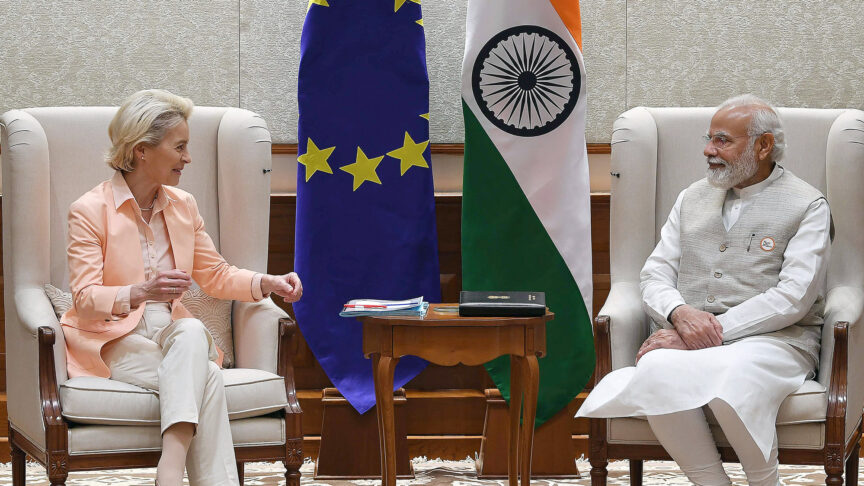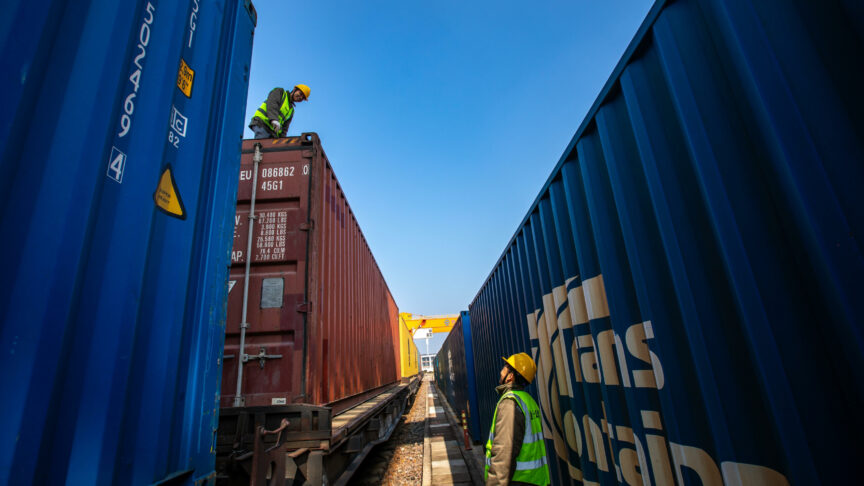China-India Ltd?
China and India have strong financial incentives to cooperate, but might potential confrontation stymie profitable engagement?
Over the past few decades, China and India have managed to push their disputes into the background in order to cooperate with each other. The two countries have established trade and economic relations. They have cooperated on issues like international trade and climate change and within multilateral institutions such as the G20. They have even started to work together on security, in particular to fight regional terrorism. So there are good reasons to believe that – despite their looming disputes – China and India could extend their cooperation further. But how far could such cooperation go?
A 2013 poll from the Lowy institute found that 83 percent of Indians consider China a security threat but also that 63 percent “would like relations with China to strengthen.” Despite the seeming contradiction such a finding suggests that while Indians want to co-operate more with China they also recognise the potential for competition and even conflict. Above all, Indians are realists in relation to China. As a retired Indian diplomat said to us on a recent study trip: “India should neither dramatize nor romanticise China”. China and India now need each other more than before. “We are looking at a long-term cooperative development”, an Indian analyst told us.
The main reason for India and China to cooperate is simple: cash. Bilateral trade between India and China is now roughly $70 billion annually, but there is a trade imbalance in favour of China, whose exports to India in 2014 were $38 billion. Investment is one way for India to try to compensate the trade deficit and so, prior to Modi’s visit to China in May 2015, there was much speculation about the investment package India would get. In the end, 24 agreements and additional business plans were signed, worth more than $22 billion in investment, though this proved to be less than half the investment value of the deals China agreed with Pakistan in April 2015.
India-China business plans include a fourth Indian bank with a branch office in China (ICICI Bank) and Chinese financing of Indian projects in the fields of telecommunications, solar, energy, and steel. Further agreements between India and China include cooperation in areas ranging from tourism, culture (e.g. the establishment of a yoga college), science, and infrastructure. China and India agreed upon an action plan on enhancing existing cooperation in the railway sector. A feasibility study is currently being conducted to build a high-speed railway from Delhi to Chennai, covering a distance of roughly 1700 km. China has also shown interest in funding an expressway connecting the Indian cities Lucknow and Ballia.
There is now a further new element in the India-China relations that could increase cooperation: China’s newly created institutions such as the Asian Infrastructure Investment Bank (AIIB), and the Silk Road initiative. India has accepted China’s invitation to join the AIIB as one of the first founding members, and both countries have set up another bank with the BRICS countries, the New Development Bank, also known as the BRICS bank. India already holds the first presidency of the BRICS bank; as the second largest stakeholder in the AIIB, it could also occupy the vice-president’s post.
China has also offered India the prospect of cooperating on the Silk Road. When Modi visited China, Xi invited him to the city of his ancestors, Xian – one of the starting points of the Silk Road. But Modi has not yet responded and India’s role in China’s grand initiative remains to be confirmed. But as a member of the AIIB – a potential financing source of some Silk Road projects – India is already part of the Silk Road project, whether it likes it or not. Through several financing institutions (among them a fund set-up solely for the Silk Road) China is, according to a Beijing analyst, ready to kick-start financing of the (very) roughly estimated total $21 trillion Silk Road infrastructure. And, according to some Chinese analysts we spoke to, the AIIB was established to finance infrastructure construction along the ‘One Belt, One Road’ project.
Since India is such a crucial partner in China’s Silk Road initiative, the Chinese leadership has been more forthcoming towards accommodating India in its foreign policy too. During the Shanghai Cooperation (SCO) summit, held on the 9th-10th July 2015, China finally approved giving full membership to India and Pakistan. India and Pakistan have been observers since 2005, and at times it seemed very unlikely that they would be accepted as full members (due to their disputed relationship). But today, China needs India to join its clubs. The SCO could eventually also develop into a security provider in Central Asia – where the continental Silk Road passes through.
The big question for Modi is how to turn the Silk Road to India’s benefit. What India needs above all is infrastructure: in the World Economic Forum’s Global Competitiveness Report 2013–2014, its infrastructure ranked 85th out of 148 countries. But it lacks the domestic resources to meet its estimated $1 trillion demand for infrastructure development. The main significance for India, therefore, of the AIIB and BRICS bank is that it might help to facilitate investment for the infrastructure sector.
However, China is not Modi’s only target for foreign investment in infrastructure. In fact, the greater China looms as a potential investor, the more Modi seems to be attempting to diversify India’s foreign trade and economic relationships. Japan is also bidding for the Lucknow-Ballia expressway and conducting a feasibility study for a rail project from Mumbai to Ahemdabad. Modi’s China trip followed visits to South Korea, another important investor, and to Mongolia, which he was the first Indian prime minister to visit. In July, Modi visited Central Asia, and signed agreements with Kazakhstan – one of the key countries on China’s Silk Road. Thus Modi’s policies of ‘acting east’ while ‘looking north’ are fuelling competition with China throughout Asia.
The ongoing geo-economic competition between China and India in Asia shows there are limits to co-operation between them. Even where there are common interests, co-operation is not always straightforward. For example, although China and India have a common interest in a stable security environment in Asia, they are endangering it with their border dispute. Although they have a common interest in a stable Afghanistan after the US withdrawal, they destabilise it by competing in relation to Pakistan. Although they have a common interest in a sustainable environment, they worsen it with their thirst for resources – and so on.
Finally, cooperation could also be limited because of the different nature of the two countries. There is some envy among Indians about the ability of China’s authoritarian system to produce economic growth: “China gets things done”, as an Indian analyst put it. But as much as Indians would like to see their country growing as fast as China did, they know that the Chinese model won’t entirely fit India. As China–India relations have limits, it opens space for other players to increase their own partnerships with India. One such player is the EU. But so far it has missed the chance to invite India to look, and act, towards Europe.
Part 3 of this analysis will focus on areas of Europe-Indian cooperation (in contrast to China-India relations) and will be published on the 15th August.
The European Council on Foreign Relations does not take collective positions. ECFR publications only represent the views of their individual authors.


